In the cooking process, the first thing we need to do is to prepare the ingredients that need to be used, clean and process them, and then use them for cooking. In French, this is called “mise en place.” In professional Chinese kitchens, we call this “main and auxiliary material cleaning.”


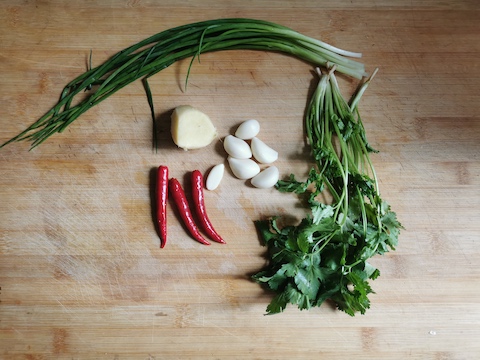

We perform different preliminary processing according to different types of ingredients, different parts and uses, and then cut and cook. The preliminary processing of ingredients is the most basic work before cooking. Knife skills are the most important, to ensure that the ingredients will cook evenly and at the same rate.
Trimming and cleaning vegetables
First we remove the inedible roots, stems, leaves, bark, etc. of plant ingredients. Then we clean the dust, fertilizer or other contaminants from the skin. This makes the ingredients clean, which is an important step. It is impossible for us to cook with a dirty ingredient.
Processing raw vegetables
When processing, we must maintain the integrity and aesthetics of the shape of the food. Food materials with cracks should be cleaned. For example, there may be silt in the cracks of the green garlic section. We have to clean the ingredients first and then cut and mix them.
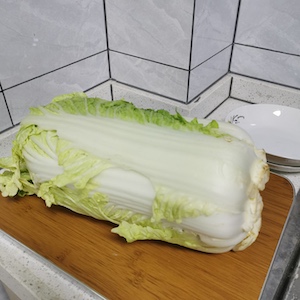
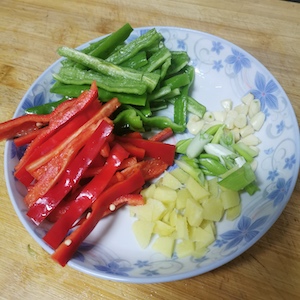

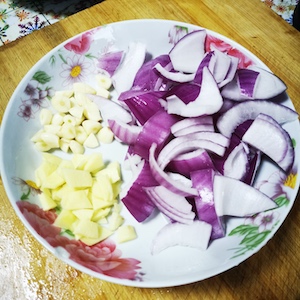
Preparing Meat and Seafood in a professional Chinese kitchen
First we remove mucus and blood stains, thoroughly remove internal organs, and eliminate fishy odors. Provide a clean and hygienic raw material for cooking.
Butchering meat
We maintain the integrity of the raw materials by using appropriate butchering methods. Chinese eat animal organ meat, so we take care when butchering to avoid waste.
Cleaning and preparing seafood
- Processing fish with scales: scrape off the scales with a knife, remove the gills, cut the belly of the fish, remove the internal organs, cut the fins, and wash the fish.
- Processing fish without scales (remove mucus):
- Use hot water: use different water temperature according to different fish species, the water temperature used for eel is 60° C-80° C (140-176° F).
- Use salt and vinegar: Put the fish in a basin, add salt and vinegar and knead repeatedly until the fish’s mucus starts to become foamy, then wash it with water, and then drain the water.
Cleaning and preparing shellfish
Shellfish processing steps: Put the shellfish in water with salt and a small amount of oil, and wait for them to spit out sand. Then peel off the shell to remove contaminants, then wash the shell meat and soak it in water.
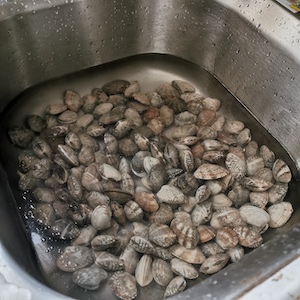
Oyster processing: Open the oyster shell, take out the oyster meat, wash away any oyster mucus with salt and vinegar, and soak in water.
Preparing poultry and fowl
Freshness of ingredients is important. In the professional Chinese kitchen, we kill the chicken or duck, then pluck the feathers. Then we dress the bird by draining the blood and removing internal organs, and cleaning any blood, mucus and impurities from the carcass. Finally, we clean the organs, such as the gizzard, liver, and heart, for cutting.
Careful cleaning and plucking of poultry
We have to bleed the chicken or fowl completely. Blood left in the bird will turn the meat purple and give the meat a “fishy” smell which will give the dish a bad flavor.
When we pluck the bird, we need to be careful with the water temperature. The carcass is scalded to loosen the feathers, but scalding for too long will damage the skin.
The main steps of poultry and waterfowl processing are draining the blood, removing the feathers (plucking), cutting open the belly, removing the entrails carefully, and washing the carcass inside and out.
Do you enjoy My Chinese Home Kitchen?
We enjoy sharing these authentic home recipes with you. To learn more about My Chinese Home Kitchen, please visit our About page.
Please leave a comment, or SUBSCRIBE to our newsletter.
For more of our original videos, visit My Chinese Home Kitchen on YouTube and Rumble.


